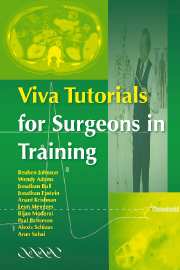4 - Critical Care
Published online by Cambridge University Press: 12 August 2009
Summary
AIRWAY ISSUES
Airway Obstruction
How would you define airway obstruction?
Partial or complete occlusion of the upper or lower respiratory tract, upper airway obstruction being more common than obstruction below the larynx.
In what situations does it occur?
Upper airway obstruction commonly occurs in the unconscious patient who is unable to maintain there airway due to the tongue falling backward. Other causes of upper airway obstruction include: laryngospasm, tumours, soft tissue swellings, oedema, infection (epiglottitis and diphtheria) and foreign objects as well as blood and vomit. In anaesthesia; lower airway obstruction may occur due to pulmonary secretions or mucus plugging, pulmonary oedema, pneumothorax or haemothorax.
What are the clinical features of airway obstruction?
Hypoventilation.
Increased work of breathing: accessory muscles of breathing are often employed, tracheal tug may be seen, see-saw paradoxical movement of the abdomen and the chest may also be noticeable.
Change in noise of breathing: complete obstruction is silent; partial obstruction is noisy (e.g. stridor).
Tachypnioea.
Tachycardia.
Lower respiratory signs will be present if there is lower airway obstruction, but this will depend on the cause of the lower airway obstruction.
How would you clinically assess an airway?
Look: for accessory muscle movements, see-saw movements of abdomen and chest, foreign bodies in airway; and in late stages central cyanosis.
Listen: for breath sounds, stridor, grunting and gurgling.
Feel: for airflow at the nose and mouth; chest movement.
- Type
- Chapter
- Information
- Viva Tutorials for Surgeons in Training , pp. 143 - 176Publisher: Cambridge University PressPrint publication year: 2004



